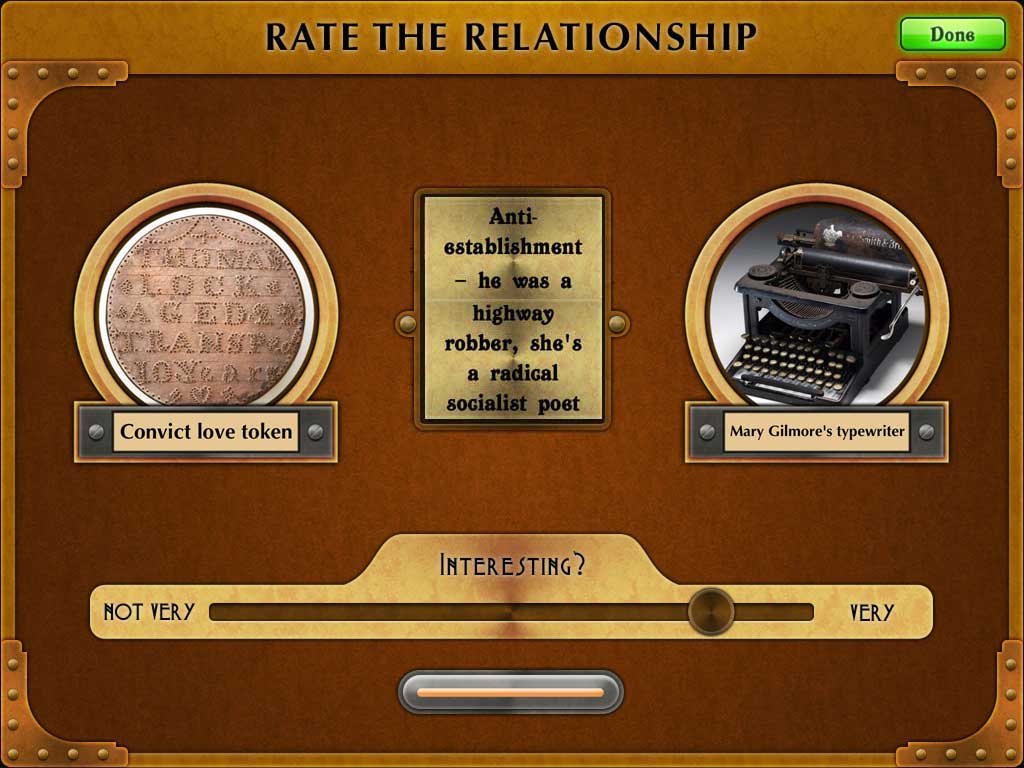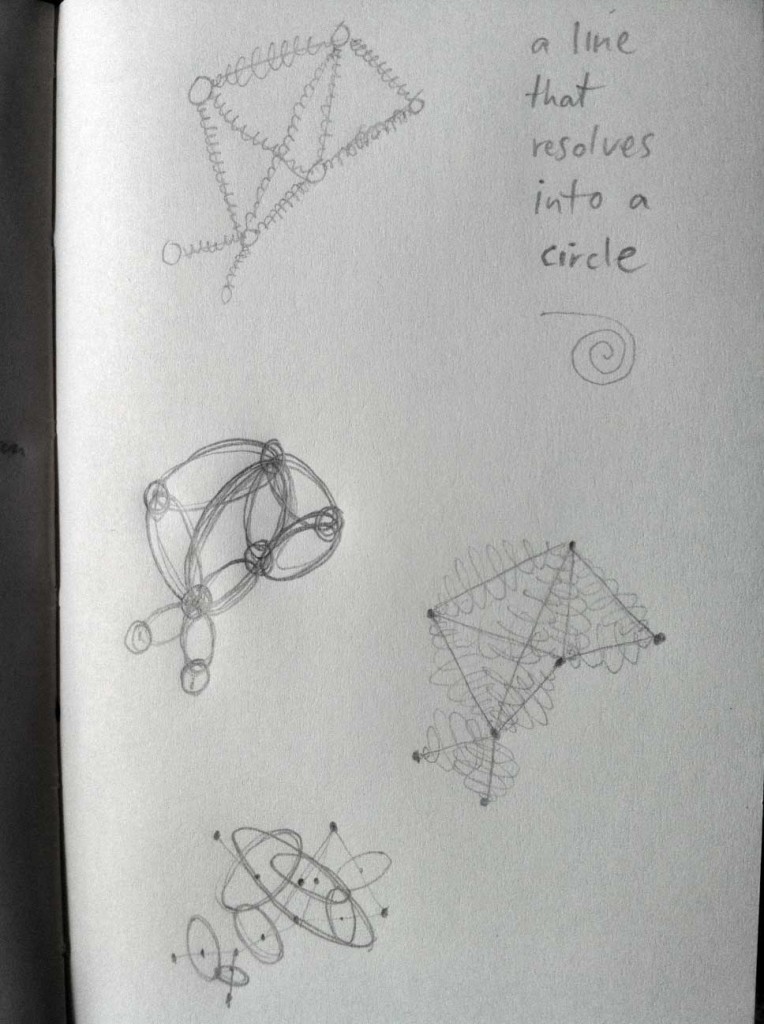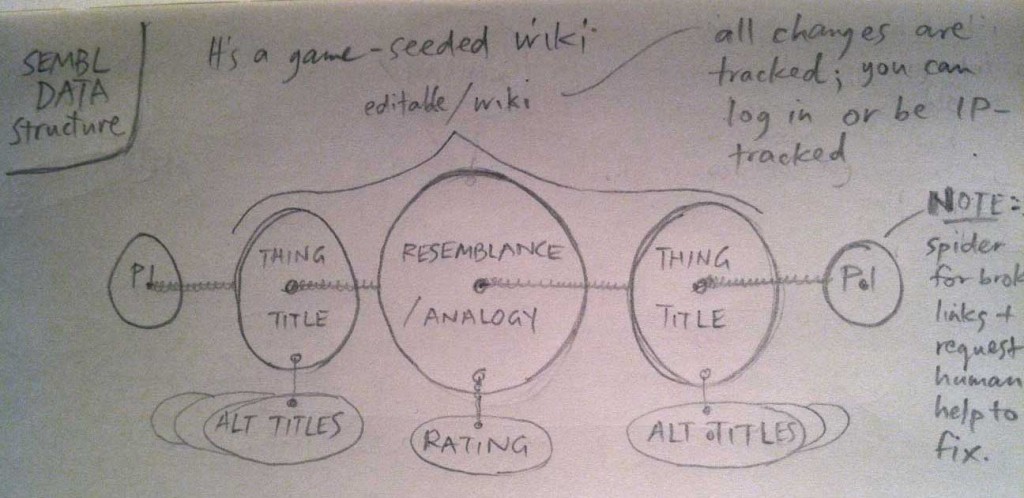Cultivating conceptual propinquity
Dialogic thinking doesn’t only mean taking into account two different perspectives; it also means recognising the common ground between entities – what it is that makes them one. This post is a note about game mechanics to cultivate conceptual propinquity.
In Sembl games, players form associations between pairs of objects or concepts. Evaluating others’ moves according to a sliding scale of interestingness provides for a great gamey dynamic. It’s fun, and about as open and social a contest as you could imagine.
More importantly, the mission to associate, and the challenge to be interesting – both invoke and honour dialogical play, sparking all manner of logical and analogical associations between nodes. In aggregate, those associations form a new big picture of the networks we inhabit, which in turn can help us to communicate better via machines.
But to operate optimally, Sembl needs an additional filter.
Sembl’s true power lies in its capacity to surface similitude – links that are mutually applicable, or bi-directional. Such links do not make a comparison; they unite.
Having now observed dozens of games played at the Museum, I notice that players often deviate from my purist approach, and create links in the form of this-whereas-that, associating the pair by way of an opposition or a third element. Such moves can be highly humorous and thereby interesting, but asymmetrical links do not serve the purpose of drawing disparate objects and concepts together, so their interest is more fleeting. Asymmetrical linked data is also, as I have ranted earlier, subjective, sometimes objectionable – even authoritarian.
The act of perceiving a resemblance between things conceptually distant elicits understanding of important hidden-in-plain-sight patterns. A sense of connectedness – or the overview effect – is insightful and can fill us with wonder at the beauty and fragility of the Earth. Such a perspective can also yield understanding of the structures that divide us.
Beyond its liberatingly loose notion of interestingness, Sembl needs to surface higher-value, propinquitous links – those with a centripetal force – those that specify the nature of a similitude. I’m therefore thinking that… Players should be able to mark down links that don’t work both ways.




